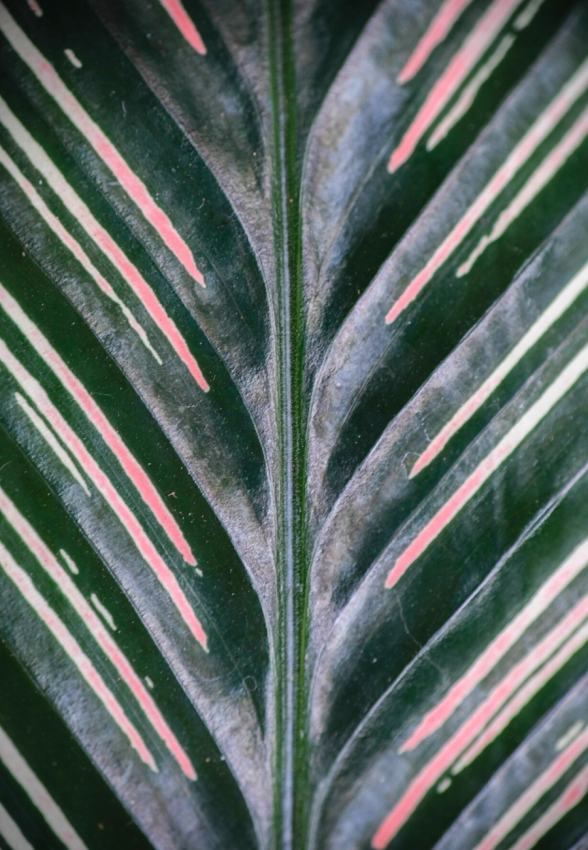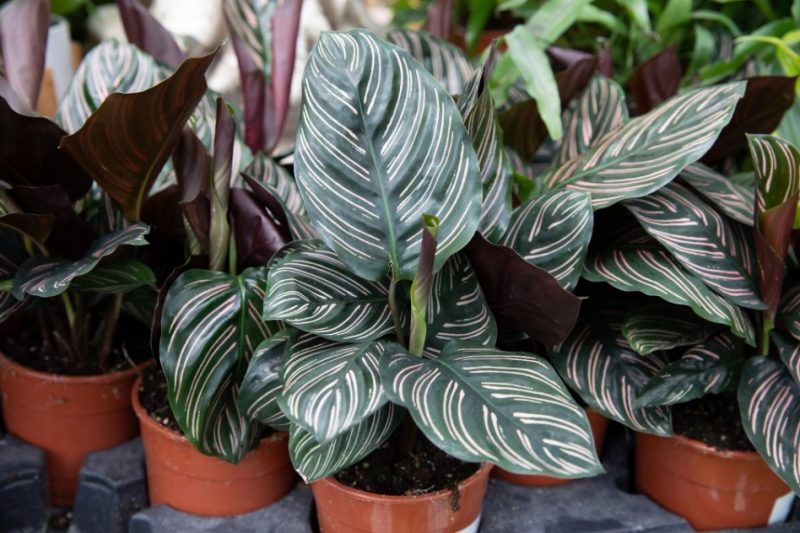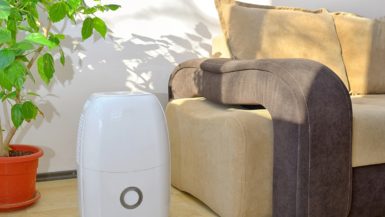The Calathea Ornata is an amazing houseplant that will improve any home. Its aesthetic appeal and natural filters will boost health and happiness in any household.
One of the biggest benefits of owning plants is that they boost your overall happiness by lowering stress and providing a natural filtration system. Fresh air inside of the home is an often underestimated mood enhancement.
This Calathea Ornata care guide will walk you through the process of owning this amazing houseplant.
Calathea Ornata Watering Guide
Like other Calathea species, the Ornata is quite the fussy drinker. It requires much more attention to detail than the average houseplant. The biggest issue with the Calathea Ornata is that it despises hard or fluorinated water. If this plant is given water with either of those things in it, then the leaves will turn brown around the edges.
Unless you are on well water, then using tap is out of the question. You’ll need to either filter it or invest in distilled water. Using rainwater is another solution.
With that in mind, the Calathea Pinstripe doesn’t like soil that’s saturated in water. It prefers moist soil and will rebel against soil that is too wet. Check the top layer of soil every day and if it’s dry, water the plant until the water seeps from the drainage holes. Then allow the pot to drain and empty the drainage tray.

Lighting Guide for the Calathea Pinstripe
Lighting is the second most important element for the Calathea Ornata. While many places claim that this plant is okay in darker environments, that’s not really the case. It can survive periods without light but it won’t thrive. It actually prefers bright, indirect light.
Place the Calathea Ornata in the corner of a room away from the window so that it doesn’t get directly impacted by the sun’s rays. You’ll know when the plant is getting too much light because its leaves will lose color.
Sitting this plant directly in or under a window is not a good idea. Remember, it’s native to rainforests that don’t receive direct sunlight.
Soil and Repotting Guide
The Calathea Ornata must be repotted every two years. Place it in a container that’s approximately 2 inches larger.
Choosing the right soil is extremely important because you must use a soil that drains well so that you avoid over-saturation. You have two choices here: either make your own soil or purchase an indoor potting soil from your local gardening shop.
You’ll need a type of soil that is slightly organic but also contains perlite or sand to help with draining.
Calathea Ornata Propagation Guide
Let’s start this section by looking at the time in which this plant can be propagated. The best window is spring. The worst window is winter. In fact, if you try to propagate the Calathea Ornata in winter it will likely not succeed.
The Calathea Ornata cannot be propagated using stems. You have to divide it at the roots so it’s a bit trickier than other houseplants since it has sensitive roots. If you are not gentle here, you’ll damage the roots and could kill the plant.
Gently separate the roots using the natural division and place the new section into another pot with rich soil. Water the new plant until the soil is damp.
Pinstripe Plant Pest Problems
There are two main threats to the Calathea Ornata.
Spider Mites
Spider mites are always a problem with plants of the Calathea species so you’ll need to protect against them by ensuring that all of the plant’s needs are met. These pests normally show up with the plant is under distress from lack of watering or low humidity. Treat them using insecticidal soap.
Mealybugs
Mealybugs are another common pest of the Calathea species. These are easy to treat though and can be wiped away using a cotton swab. Do this immediately after discovering them. If they become a problem, you’ll have to repot the plant.
Calathea Ornata Temperature and Humidity Requirements
Since this is a tropical plant, it requires high humidity in order to thrive. If you don’t live in a high humidity area, then you’ll need to simulate it. You can do this one of two ways:
- Lightly mist the leaves with water using a spray bottle every day.
- Fill a tray with stones and water. Place it under the plant so that the water evaporates upward toward the plant, thereby creating humidity.
Some other ideas are to place the Calathea Ornata in a room that’s naturally humid. The kitchen and bathroom are both great choices.
The Calathea Ornata requires temperatures ranging from 65 to 85 degrees. Do not place it in an area where the temperature will drop below 65. Also be sure to keep it away from air conditioning vents.

Fertilizing the Calathea Ornata
Thankfully, the pinstripe isn’t a fussy eater so this is a relatively low maintenance plant to fertilize. Invest in a general houseplant fertilizer and then feed it about once every month. Furthermore, you only need to do this during the spring and summer. The rest of the time, once every 2 months should be sufficient since the plant is dormant.
The only issue you might run into is over-fertilizing it. At times when your plant doesn’t seem to be growing, then don’t fertilize it. This will actually burn the roots and damage the plant. I also highly recommend that you dilute liquid fertilizer more than normal so that it isn’t too strong.
Pruning and Maintenance of the Calathea Ornata
Sometimes leaves on the Calathea Ornata will brown. This doesn’t always mean that there’s a problem though. Just prune away those leaves using sterilized scissors or just use your hands. However, if a lot of leaves are turning brown, then there might be a problem.
Removing dead leaves is important because it helps the plant thrive and maintain a good growth pattern.
Another valuable care tip is to gently dust your Calathea Ornata at least once a week to remove unwanted matter from its leaves. This helps prevent infestations.
Putting it All Together
The Calathea Ornata is quite a fussy plant so it’s important that you stick with the guidelines shown in this blog post. Identify problems and address them immediately so that your plant will thrive.
With that in mind, the most important things to keep in mind are as follows:
- Ensure that the humidity is high enough to accommodate the plant.
- Water the soil enough so that it’s moist, but not so wet that the soil is soggy. Both overwatering and under watering can lead to problems.
- Place the Calathea Ornata in bright light while making sure that it’s not directly in sunlight beaming through the window. Direct sunlight will burn the leaves.
Hopefully, this guide helps you raise a healthy and beautiful plant!






Leave a reply